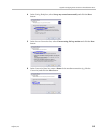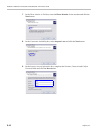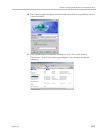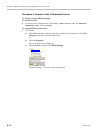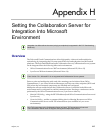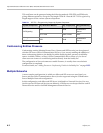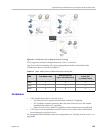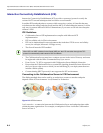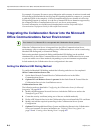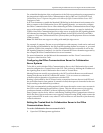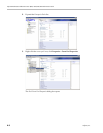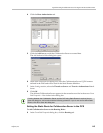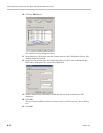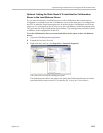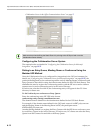
Appendix H-Setting the Collaboration Server for Integration Into Microsoft Environment
Polycom, Inc. H-5
Branch Office - a connection between an endpoint that is behind a firewall and the
Collaboration Server that reside in the same zone. The user in the Branch Office can also
place and receive calls from other enterprises and remote users. For example, Enterprise A
also contains a branch office, which in this example is a Polycom HDX user who is behind
more than one firewall.
Remote - a connection between Collaboration Server that resides within the organization and
an endpoint that resides outside of the organization (on a WAN). For example, an endpoint
on the internet that calls the Collaboration Server in Zone A. In such a case, the call has to
traverse at least one firewall.
Federation - a connection between Collaboration Server that resides within one organization
and an endpoint that resides within another organization. For example, an endpoint in Zone
A calls the Collaboration Server in Zone B. The call has to traverse two or more firewalls.
Dialing Methods
The ICE protocol enables remote and federation connections using the registered user name
for dialing. The endpoint connects to the Collaboration Server by entering the Collaboration
Server registered user name in the following format:
[Collaboration Server registered user name]@[OCS/Lync server domain name]
For example: rmx111@ilsnd.vsg.local
The call reaches the Transit Entry Queue of the Collaboration Server and via IVR is routed to
the destination conference.
This method is added to the local connections and Matched URI and Numerical Dialing
methods available in Microsoft Office Communication environment and the Numerical
Dialing method available in the Lync server environment.
The following table summarizes the dialing methods and its availability in the various
configurations.
* To enable the Matched URI dialing in the federated environment to be able to connect to the
Collaboration Server SIP signaling domain, you must also configure the Office Communications
Server/Lync Server.
When federating an Office Communications Server/Lync Edge server with another Office
Communications Server/Lync server environment, you need to include the FQDN of the
Office Communications Server/Lync Edge server as well as the SIP signaling domain for
federated environment. The SIP signaling domain is the FQDN of the Polycom DMA system
or a Polycom Collaboration Server system (when your deployment does not include a DMA
system).
Table H-3 Available dialing methods per Connection Type
Matched URI Routing Numerical Dialing Registered User Name
Local
Branch office X
Remote X
Federation X



